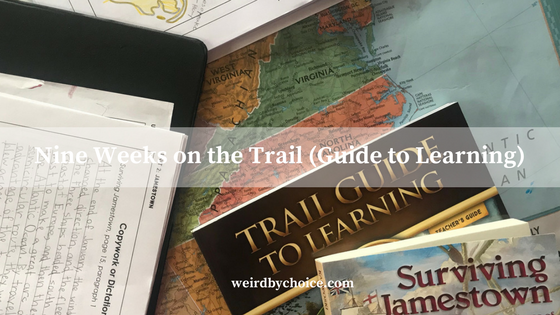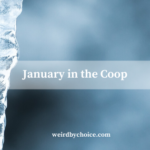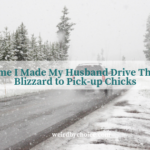We are nine weeks into our school year and our new unit-based curriculum, Trail Guide to Learning: Paths of Exploration from Geography Matters. So far we’ve explored Columbus’s early years and the significant events which led to his becoming the most famous explorer in American history. We are halfway through our six-week unit on Jamestown, seeing much of this period of history through the eyes of John Smith and young Sam Collier. My original impressions of the curriculum still ring true.
THE BOOKS ARE BEAUTIFUL AND MY FAVORITE PART OF THE CURRICULUM PACKAGE.
My kids are enjoying their readers and we are all loving the denser, read-aloud books. I’ve always wanted to incorporate more read-aloud time into our schooling, but find that I am only successful at it when it’s incorporated right into the teaching plan. The historical fiction included in the curriculum does an excellent job of weaving historic fact with enough fictional details to be engaging to younger learners.
THE PRINTED STUDENT NOTEBOOKS ARE WORTH EVERY PENNY.
For two students, these printed materials added $150 to my total order, but I can’t imagine having to print the required volume of worksheets on a weekly basis. (And not just because my printer has been out of ink for the last month.) I divided the notebook pages into six, 1-inch, three-ring-binders for each child, creating a workbook of sorts for each topical unit.
I APPRECIATE HOW EASY IT IS TO TEACH MULTIPLE STUDENTS OF VARYING GRADE LEVELS.
I am teaching my fourth and fifth graders from the same manual and about 80% of their work is the same. My fifth grader has longer copywork passages, usually has a bit more science work and occasionally has different geography lessons. But, even when the kids aren’t working on the exact same materials, it is still very easy to teach them in tandem without breaking our flow or feeling like we’re waiting for one or the other to catch up. Since my fifth grader has much longer copywork passages (and much more meticulous penmanship, which makes him write slower), I use the extra 10 minutes or so I have with my fourth-grade daughter to work on teaching her cursive.
I FEEL GOOD ABOUT IMMERSING MY KIDS IN PILLARS OF AMERICAN HISTORY.
Up to now my kids’ history had focused on biblical history starting from creation and working up to early Greek and Roman rule. We had been using Veritas self-paced courses successfully, but I felt it was a good time for a change and my kids are at very good ages to begin to understand how history impacts our current reality. I like that we are spending the year focused on our own nation because it seems a more tangible way to ease my kids into history, talking about states we are familiar with, people we’ve heard of, etc.
I WISH SCIENCE DOVE A LITTLE DEEPER.
As with many homeschool curriculums, “science” in this context seems to mean primarily the study of animals at this age/grade level. While this is an important area of science and one usually of interest to kids, there are so many other fascinating areas to incorporate, even with students of younger ages – geology, meteorology, physics, botany, etc. For the last two years we used Nancy Larson science and LOVED it. I was very sorry to see it go this year, and this is also partially why I feel a science focused largely on American animals feels a little thin. Also, the work we do around science is very superficial, usually focusing simply on habitats and physical characteristics of a particular animal. I’m hoping in subsequent units, we may dive deeper into other topics.
Overall, I am very happy with Trail Guide to Learning and feel good about our decision to abandon multiple textbooks in favor of a unit-based approach. I am spending more time with my kids, learning together, but overall we’re spending about an hour less on school each day. In the life of a weird homeschooler, we call that – a win win!
How about you? I would love to hear how your school year is going so far!





